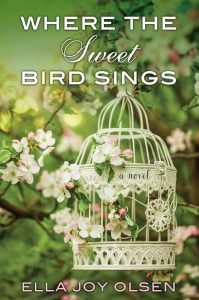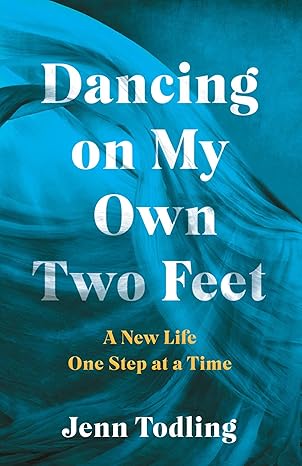Too much Research – Part 2
 Too much Research – Part 2 (Read Part 1 HERE)
Too much Research – Part 2 (Read Part 1 HERE)
(or why you must leave awesome things out of your book)
Case Study: WHERE THE SWEET BIRD SINGS
Subject: Can your spit tell you where you’re from?
Authors choose to write about a subject, location, or timeframe because there’s something about one or all of these things that makes them tick. They’re willing to spend time, often years, rolling around in the details, envisioning the scenes, researching.
But if the work is fiction there is always a point when enough is enough. Readers enjoy fiction for the story, how it brings to life a certain place, time, or situation. If they learn a few facts along the way…awesome. If they are confronted with only facts, they feel like they’re reading a text book.
I was forced to face this truth several times while writing my most recent novel: WHERE THE SWEET BIRD SINGS. I researched genetics, human migration, autosomal recessive genetic diseases, and ancestry. These things are fascinating to me, the science behind the story, but after learning amazing details I didn’t include even some of the best tidbits. Why? Because of the dreaded info dump. But today I’m indulging myself and I hope you’ll join me. I’m raising the truck bed. I’m dumping…
Our subject is DNA testing and ethnicity. Disclaimer: This is a very simplified version of complex scientific theories and facts. This is obviously a short article and I don’t claim to be an expert. We begin:
Humans share 99.5% of our DNA with other humans. For those of you who don’t know, DNA is the code which tells protein blocks in our cells to become human: meaning hands on ends of arms, standing upright, hair on top of the head, speech and not barking, and so on. It takes 99.5% of our DNA to tell our cells to be human and not banana, for instance.
The remaining .5% of our genetic code creates the variation between humans. It is what makes you different from your neighbor. Using these slight variations in the code, a DNA test may determine ethnicity (or geographically where you came from).
How does it work? Cells replicate as they divide. They are supposed to copy themselves perfectly, but sometimes when replicating, one base pair in the genome is changed, and from that point forward, the variation/mutation continues. The variation is called a single nucleotide polymorphism or SNP. Many SNPs create no observable difference, but some do. An observable difference is called a phenotype. A phenotype is what typically gives Asians black hair, or people who originate from Northern Europe lighter coloring, for instance.
To a limited extent, nondescript saliva (and the DNA found in it), can track the geographical movements of our ancestors. In the not so distance past, humans were unable to take a plane or a train to another country, so they tended to make babies with mates who lived close by.
This means the number of similar SNPs in a saliva sample could give an indication ancestral location, or determine a person’s haplogroup. A haplogroup is a genetic group of people who share a common ancestor. These haplogroups can then be correlated with ethnic categories/locations: African, European, Native American, and so on.
How does this research relate to my story? In Where the Sweet Bird Sings the main character, Emma Hazelton, has lost a child to a disease most commonly found in the Ashkenazi Jewish population. She didn’t take a screening test before conception because, as far as she knew, she had no Jewish ancestors (the Ashkenazi Jewish Genetic Panel is a test commonly given to people of Jewish descent because the diseases can be common and devastating).
Although her research doesn’t change her own genetic code, Emma is driven to discover the root of the disease. She starts by taking a DNA test, but this doesn’t tell the whole story, there’s ancestral research that must be done. Emma learns things about her ancestors that she never expected.
There was my story. There was the conflict. But the science behind the story was so cool! So I tried like crazy to work it into the dialogue. I tried to sneak it into bits of narrative…but in the end, most of what I learned I had to cut…because it didn’t contribute to the story arc. I didn’t want my readers skimming.
Once you research, especially if you find it fascinating, it can be hard to leave some of the less necessary details behind. You must listen to your beta readers, agent, or editor. They may not be quite so passionate about the subject (and they don’t care about the hours you spent diligently collecting the information). They are in a position to tell you when enough is enough.
As a writer, you must be brave. You must…cut.
—
Ella Joy Olsen was born, raised and currently resides in Salt Lake City, Utah, a charming town tucked at the base of the massive Rocky Mountains. Most at home in the world of the written word, Ella spent nearly a decade on the Board of Directors for the Salt Lake City Public Library System (and four decades browsing the stacks). She is the mom of three kids ranging from just-barely-teen to just-flown-the-nest-teen, the mama of two dogs, and the wife of one patient husband.
Though she’s crazy about words Ella is also practical so she graduated from the University of Utah with a degree in Finance. After years analyzing facts and figures Ella gave up her corner cubicle and started writing fiction. Fun fact: she now teaches a historical fiction course at her alma mater. She has also lived in Seattle, Washington & Savannah, Georgia.
ROOT, PETAL,THORN (September 2016) was her debut and – WHERE THE SWEET BIRD SINGS. came out in September 2017
Connect with her on her website http://www.ellajoyolsen.com/
Follow her on Twitter https://twitter.com/ellajoyolsen
Like her on Facebook https://www.facebook.com/ella.joy.olsen.author
—
 About WHERE THE SWEET BIRD SINGS:
About WHERE THE SWEET BIRD SINGS:
In this provocative new novel, the author of Root, Petal, Thorn offers a powerful story of resilience, hope, and the secrets that, no matter how deeply hidden, can shape and ultimately unite a family. What connects us to one another? Is it shared history? Is it ancestry? Is it blood? Or is it love?
People respond to tragedy in different ways. Some try to move on. Some don’t move at all. A year after her young son’s death due to a rare genetic disease, Emma Hazelton is still frozen by grief, unable and unwilling to consider her husband Noah’s suggestion that they try to have another child.
As the future Emma once imagined crumbles, her family’s past comes into sharp relief. Searching for the roots of her son’s disease, Emma tries to fit together the pieces in her genealogical puzzle. Hidden within an old wedding photograph of her great-grandparents is an unusual truth Emma never guessed at–a window into all the ways that love can be surprising, generous, and fiercely brave . . . and a discovery that may help her find her own way forward at last.
“With clearly drawn, authentic, and endearing characters, and a well-crafted plot filled with subtle tension, Olsen’s latest is a wonderfully tender story. Readers will not be able to put this one down.”– RT Book Reviews
Category: How To and Tips




























